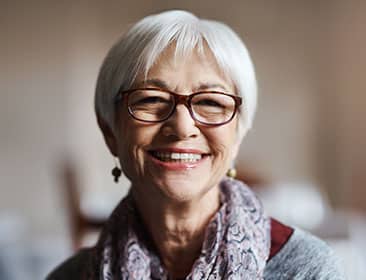
Written by Chief Product Officer Ranjeev Teelock
Mention diversity in the workplace and more than likely you will get a positive response. But how do you know that your practices support unbiased decisions? How fair are your screening methods? Do you have a system that supports an anonymized adjudication process? Is your organization genuinely assessing candidates based solely on their skillsets?
No matter how “fair” we believe our screening and hiring processes to be when it comes to assessing candidates, when presented with certain identifying information, such as names, our unconscious minds have a way of sorting candidates into categories and bypassing rational thinking. Sometimes we refer to it as “instinct” or “intuition”. The truth is these unconscious biases can cause us to make decisions in favor of one person to the detriment of others. That’s right, our brains can take us to the verge of poor hiring decisions, and it happens without our permission. In the workplace, this impedes diversity in recruiting, promotion and retention.
So, how do we overcome this challenge? What practices can help make the hiring process fairer? Here are five real-world recommendations that can help:
- Apply technology to support a concerted Diversity & Inclusion (D&I) strategy. The Harvard Business Review (HBR) recommends leveraging software to help organizations anonymize their candidate vetting procedures. The article goes on to state that using technologies that are capable of “blinding” the candidate evaluation process is advantageous.
Recognizing that unconscious biases may have a critical effect on our judgment, First Advantage’s background screening software, Enterprise Advantage, can add support to an organization’s fair hiring practices. By masking a candidate’s gender, age or nationality, including data such as their name and email address, screeners can evaluate applicants based solely on the background checks and verifications results.
Better still, Enterprise Advantage takes unbiased screening best practices a few steps further with an anonymized peer-review process for users of its Case Management feature. Using a two- or three-step method, an initial reviewer evaluates a case and makes an adjudication decision. A secondary reviewer also evaluates and adjudicates the case using the same blinded data, with all previous actions and decisions hidden. This process helps eliminate the potential for unconscious biases—a critical step in achieving organizational diversity and inclusion objectives. While this new feature complements most corporate D&I objectives with anonymized data, it also provides these advantages:
- Strengthens hiring decisions using only data and facts
- Improves internal decision-making using structured workflow management
- Increases insights about the organization’s decision patterns
- Tracks progress on all candidate screening cases
- Provides an audit trail for reporting purposes
- Mitigates penalty risks imposed by agencies surrounding employment screening
- Embraces clear and specific guidelines that help meet EEOC recommendations
- Work to understand biases and set diversity goals. Have a system for continually gathering feedback from internal stakeholders to better understand D&I in the workplace. Depending on the organization, this may range from a single, anonymous survey to several focus groups, or a combination of these and other strategies. Have an internal campaign to set expectations—ensuring everyone knows that diversity, inclusion and bias mitigation are corporate priorities.
- Update processes and policies to include tactical programs. When it comes to the hiring process, a standardized, values-aligned practice is a good springboard for cultivating a diverse culture. Consider also a task force that includes cross-functional teams charged with exploring opportunities for involvement and organizational improvement. Yet another tactic to consider is a formalized mentorship program dedicated to the intentional success of individuals from underrepresented groups.
- Connect D&I to the achievement of business results. A recent Diversity & Inclusion Benchmarking Study conducted by PricewaterhouseCoopers (PwC) indicated the importance of clear communications that encourage an inclusive culture as strategic to achieving business goals. The same study also showed that having a C-level leader as an active participant in the company’s D&I objectives is considered a primary differentiator among companies where diversity is not considered a barrier to business progress. A business-led approach backed by team leaders with clear, consistent communication and measurable outcomes are essential to achieving tangible results.
- Focus on team-level progress. Instead of focusing on “check-the-box” initiatives at the corporate level, work toward building balanced teams. According to SHRM/Economist Intelligence Unit research, when team members who are different from their co-workers are empowered and allowed to flourish, the organization benefits from their experience, ideas and opinions. Retention rates of those workers improve as well.
The Bottom Line:
Creating a balanced and inclusive team is not only the right thing to do, but it’s also how businesses will survive in an increasingly global work environment as research tells us that diverse teams lead to stronger organizations. For HR and talent acquisition managers who wish to eliminate their organization’s unconscious biases, Enterprise Advantage blinds certain identifying candidate details during the screening process.
As with any objective that is essential to business success, keep the conversation going. It’s not enough to conduct surveys or facilitate focus groups just once. The goal is a sustained reduction of unintended—or unconscious—judgements in the workplace. Continually challenge the organization to propose bias-mitigation initiatives in ways that are relevant to the entire organization.
For more information about how you can reduce unconscious biases and anonymize your candidate screening data and processes, talk with First Advantage today.
[SOURCES:]
Diversity and Inclusion Benchmarking Survey, PWC, 2019
https://hbr.org/2017/06/7-practical-ways-to-reduce-bias-in-your-hiring-process


